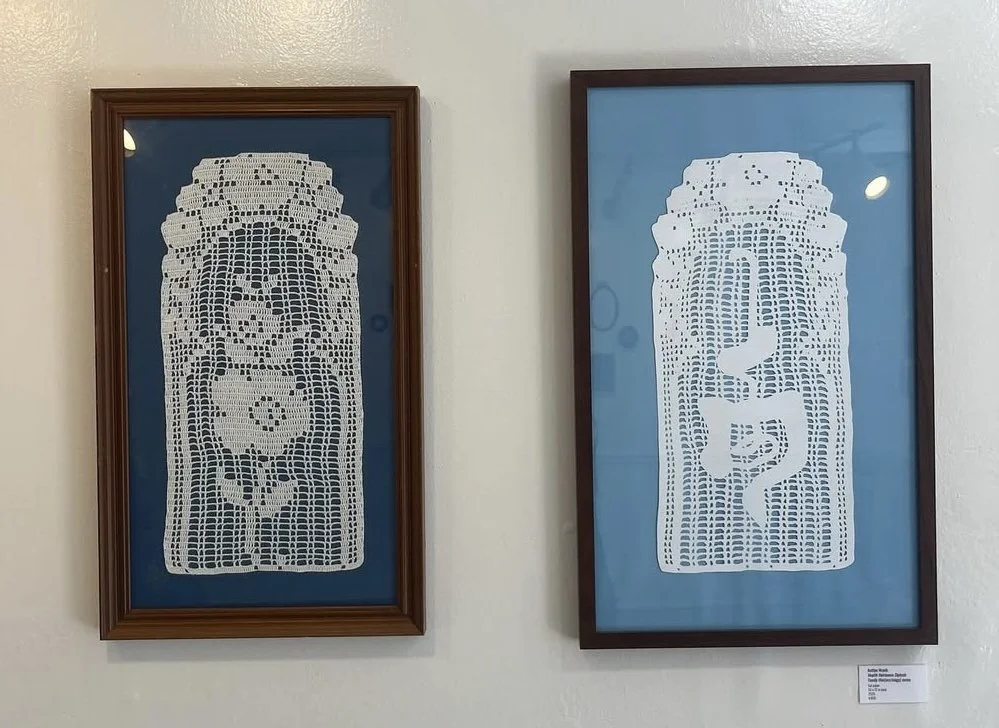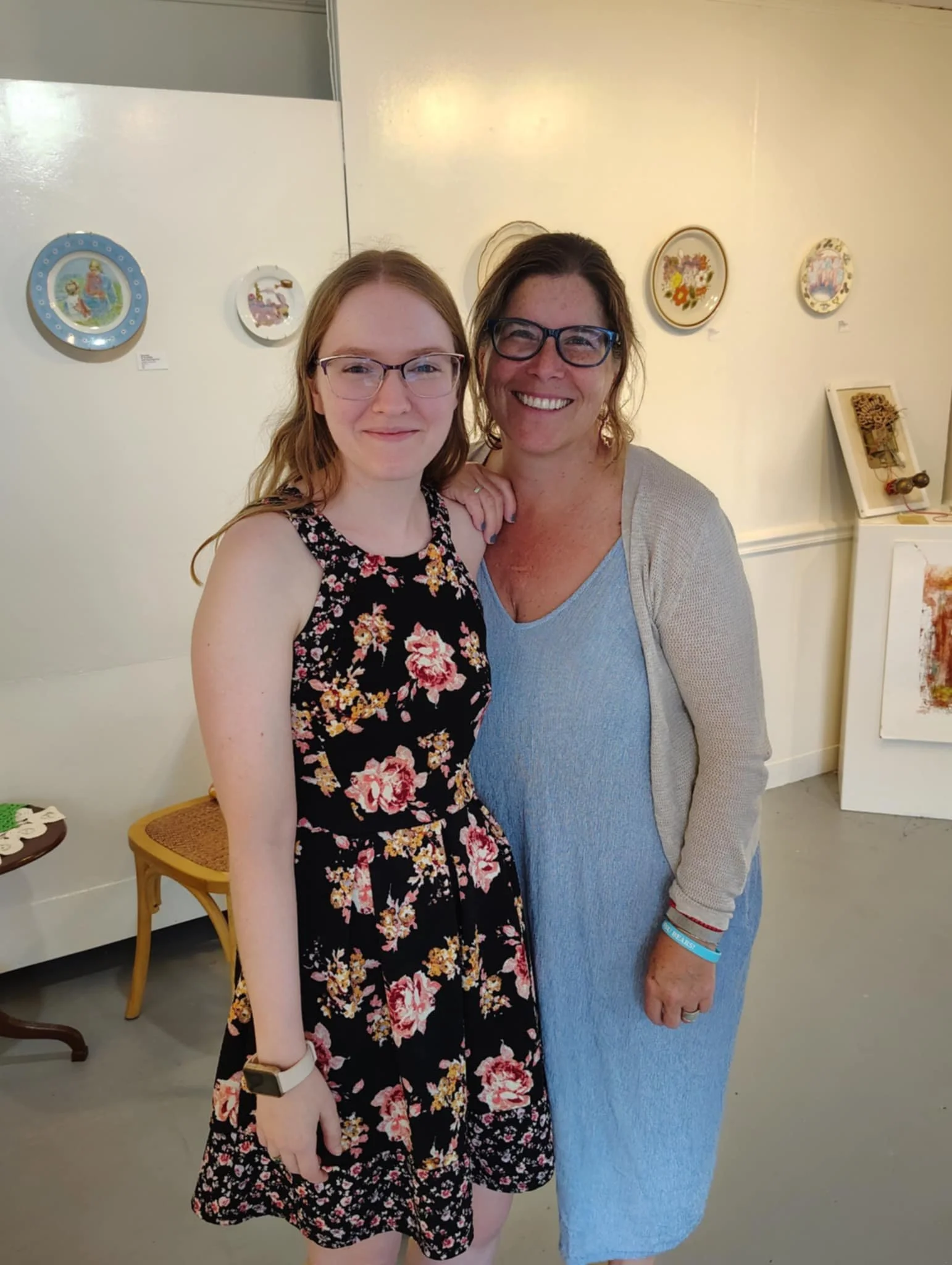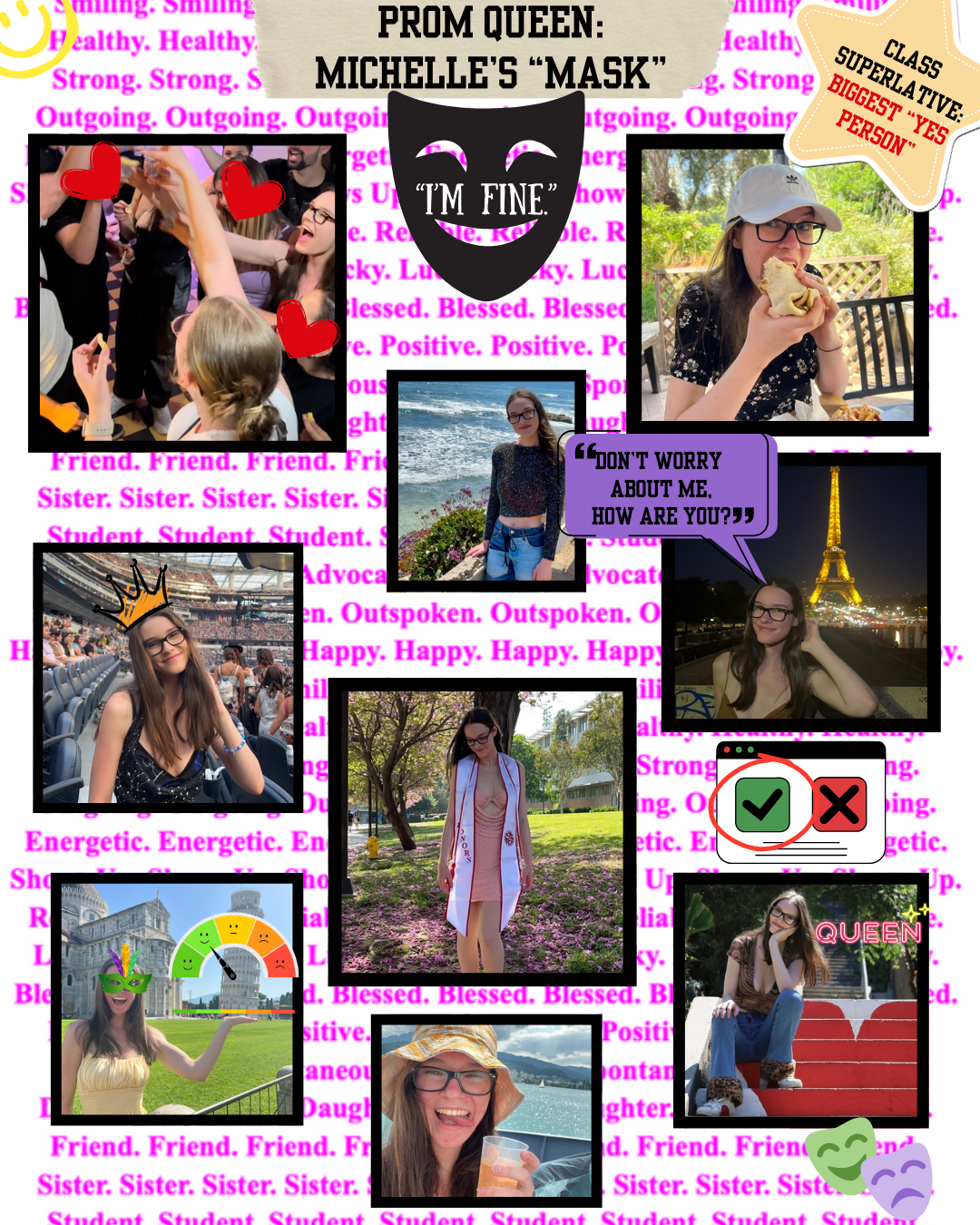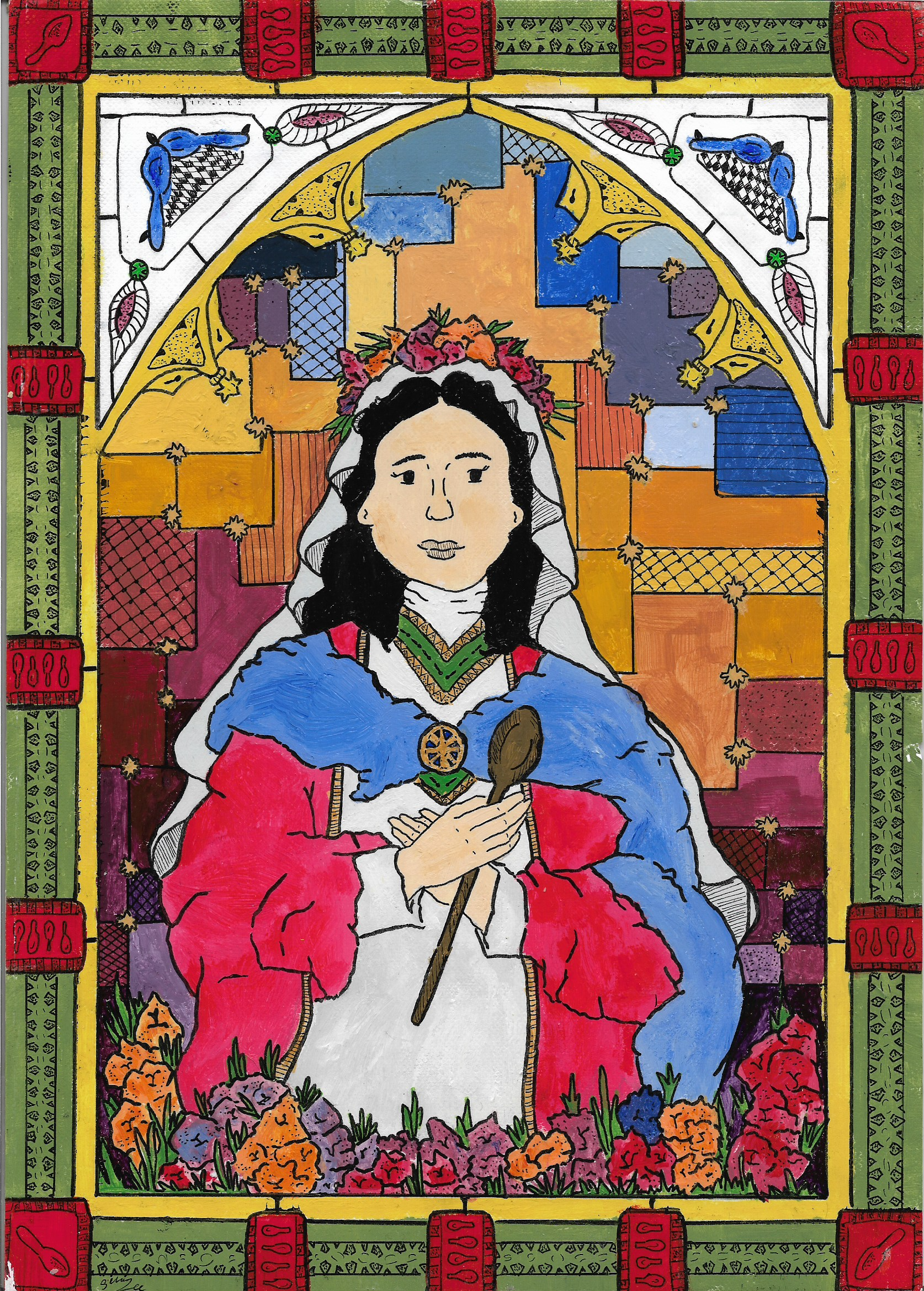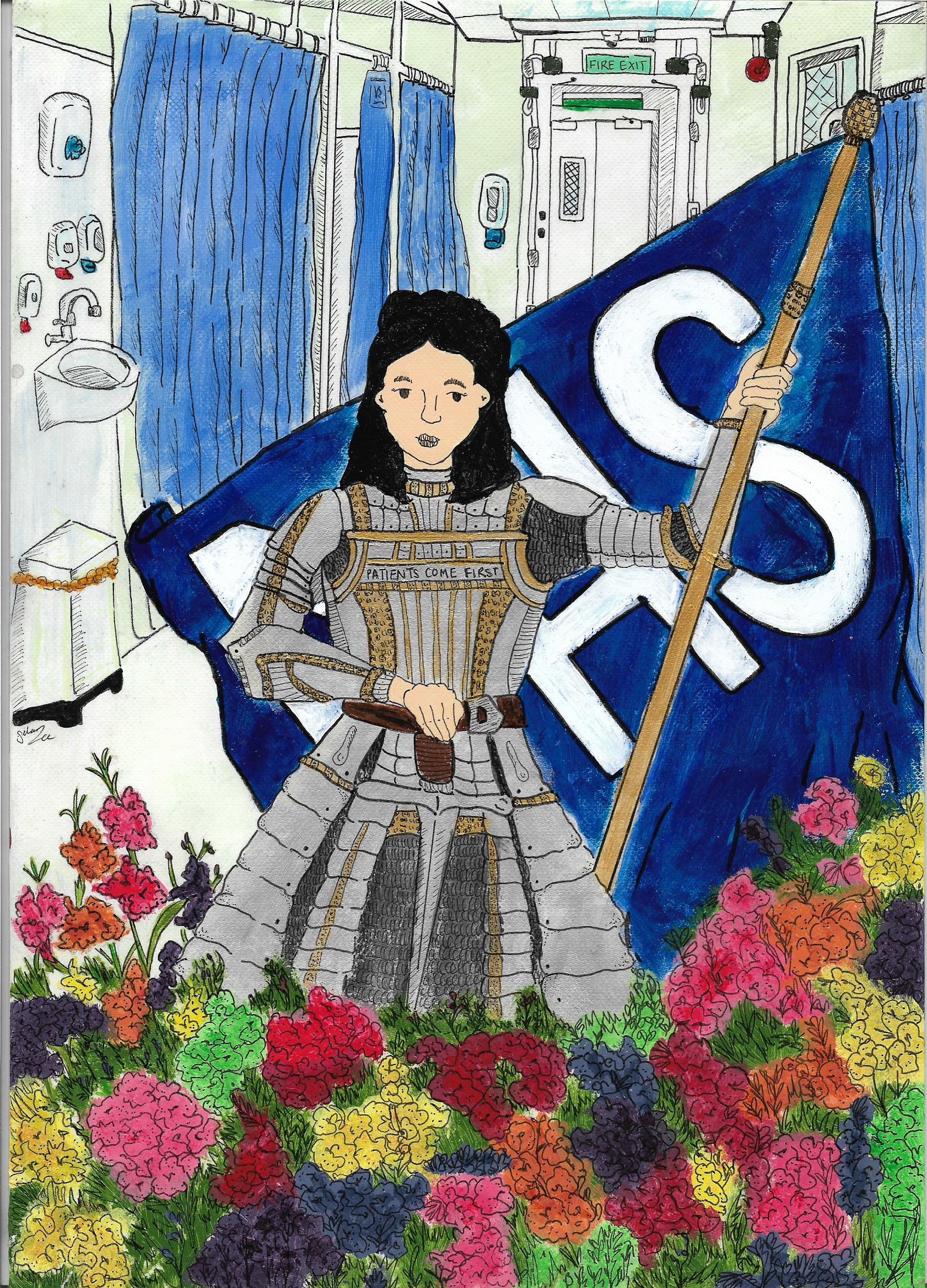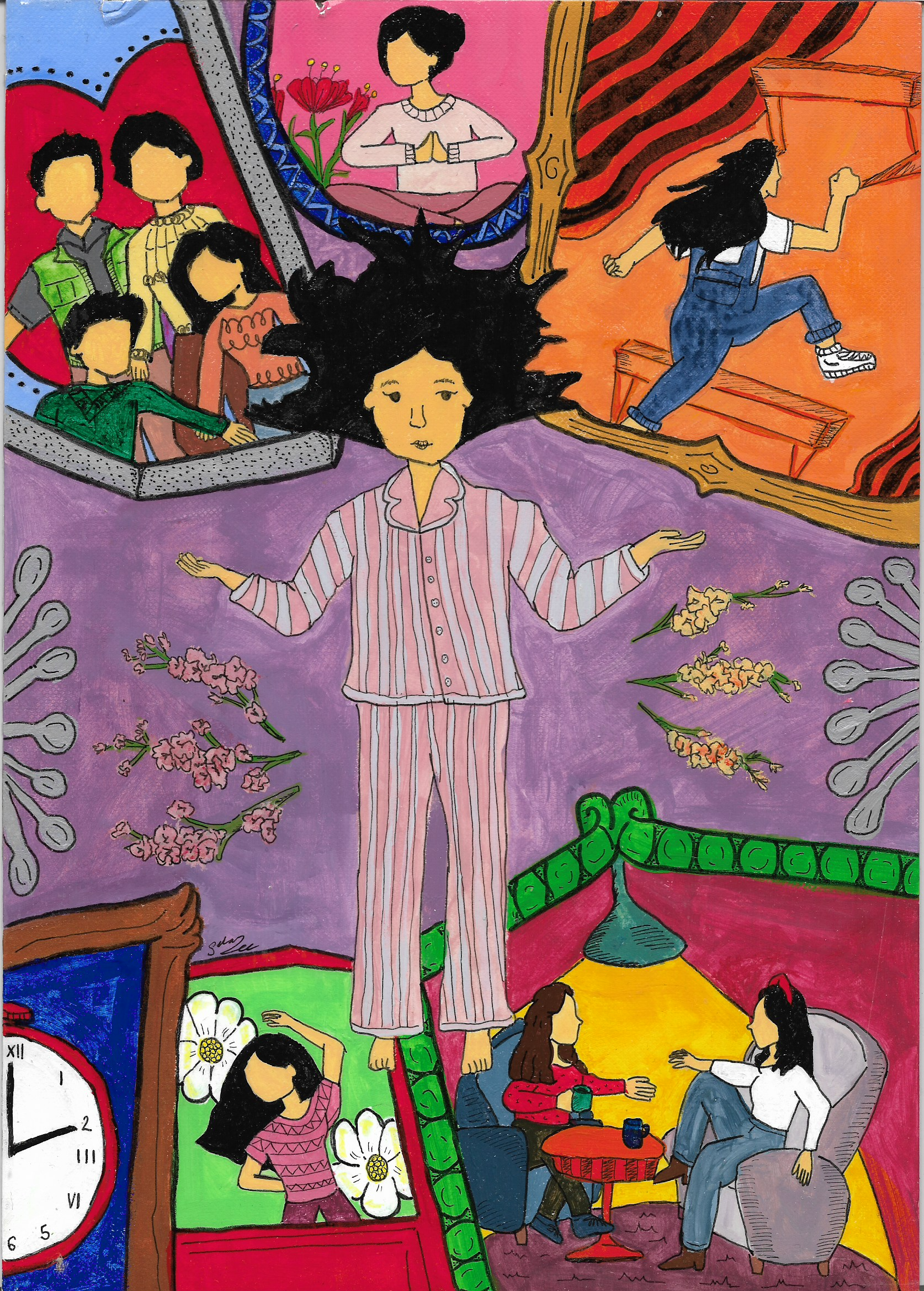by Kaitlyn Niznik (New York, U.S.A.)
If you haven't already, you can watch a video tour of Kaitlyn’s “Familial Patterns: Generations of Patients” art show here!
Acknowledgements: My warmest thanks to Shelly Philips - my co-conspirator for the show, to Deborah Reid and Tracy Hayes who run Gallery RAG, CCYAN alum Selan Lee for helping me find my message, and to all the CCYAN members and chronically ill creatives who submitted work! This was my first time curating a show and I'm so thankful I had that opportunity!
Since the start of my CCYAN fellowship, I wanted to make an art show highlighting people's shared experiences with chronic illness. In July, I went to Gloucester with a goal and a promised gallery space – while I couldn't fully visualize the show until everything was up on the walls, and imagined so many variations of the themes, ultimately focusing the show on family connections to chronic illness made it much more personal.
Shelly and I spent the duration of the show gallery-sitting and having conversations with visitors about the show's theme. As we reflect back on our time at Gallery RAG, Shelly and I have some final thoughts we'd like to share:
The stigma associated with Crohn's, colitis, and other chronic conditions is something rarely seen, let alone talked about openly. Gallery RAG, which stands for Radical Acts of Generosity, was the perfect place for us to launch this exhibition and confront people's preconceived notions of illness. The show was just a drop in the bucket to spread awareness and promote acceptance. It allowed people to come together from isolated communities - even crossing oceans to create connections. One visitor reflected on her husband's chronic illness and his struggle to find motivation to get out of the house. She thought a creative outlet might help him feel seen and accepted. Others also shared stories with us, about different loved ones struggling with their health. Sometimes just showing up is half the battle, making a safe space to create, breaking the cycle of isolation, and talking about taboo topics that are usually swept under the rug. It felt good to normalize our medical issues and talk about them casually with visitors. We hope the gallery guests and livestream viewers were able to connect with the amazing variety of pieces in the show.
Looking into the future, Shelly wants to explore how to reverse the curse of chronic illness by lessening its impact on future generations. She hopes to look into how that in itself could break family cycles of trauma. Shelly wants her future work to shed light on the mothers who never knew that they had undiagnosed autoimmune or inflammatory disease. She plans on investigating how history repeats patterns in the things handed down - after mothers have already passed down the cellular dysfunction - and exploring what immune modulation, environmental changes, and the microbiomes change such patterns. During our conversation, Shelly also talked about Alexis Gomez’s poem about seeing her mom in a different light and how much that touched her. We hope to collaborate more in the future to share the patients’ perspective and focus on how art/writing can be a healing tool.
We loved how the poems and art in the exhibition worked together. Seeing all the different submissions from poetry, collage, zines, prints, paintings really showed there are so many expressive outlets to utilize. It felt larger than us and we are so grateful we had the opportunity to share your stories. We enjoyed the challenge of making the show accessible for everyone - whether international or on the other side of the country and we can't wait to see what our next chapters bring!
If you haven't already, you can watch the video tour of Kaitlyn’s “Familial Patterns: Generations of Patients” art show here. Below, you can also see some of the pieces submitted by CCYAN fellows and other community members!
Beamlak Alebel’s (CCYAN Fellow, Ethiopia) poem, “A Heart That Heals,” thanked all the doctors, nurses, surgeons, family, and friends for helping her on her journey to healing. Her heartfelt gratitude shined through to readers who shared their appreciation for their own support systems.
Aiswarya Asok’s (CCYAN Fellow, India) poem, “Mosaics.” tackled the grief and emotions attached to carrying her mother’s hidden pain. Aiswarya’s piece offered a glimmer of hope, in that through our endurance and shared suffering, we might find more answers and a better prognosis to bring about change.
Alexis Gomez’s (CCYAN Fellow, USA) poem, “Letter to Mom,” also reflected on her relationship with her mother and how similar yet different their medical journeys are from one another. Her writing felt like a sincere attempt to grapple with mixed emotions, her mother’s guilt, and their shared perseverance in the face of IBD.
Multiple works from artist Andreana Rosnik, including: “Recipes for a Flare,” a collage communicating the danger and inflammation that comfort foods might cost us internally, which took me back to my own fights with food. “Portrait of the Artist as a Colon,” a zine (a small art booklet) illustrating her challenges living with Ulcerative Colitis. As an artist who also draws colons, I appreciated Andreana’s refreshing take on a digestive system fraught with issues. Her “colon wyrm” and “biblically-accurate intestines” deserve a spotlight as well, and could easily be made into merch and tshirts for other folks with colon issues.
Nancy Hart’s acrylic painting, “COW,” (top right) depicted a pink cow silhouette on a black and white backdrop to represent one of her many inherited allergies. Marnie Blair’s print, “Snakes and Rivers,” (center) echoed ideas of transformation and survival on the surface of a blue disposable medical drape. The layers of meaning and the subtle ties to both the body and environment appealed to us as we were curating the show.
See the rest of the featured artwork from Kaitlyn and other CCYAN community members in the video tour!
